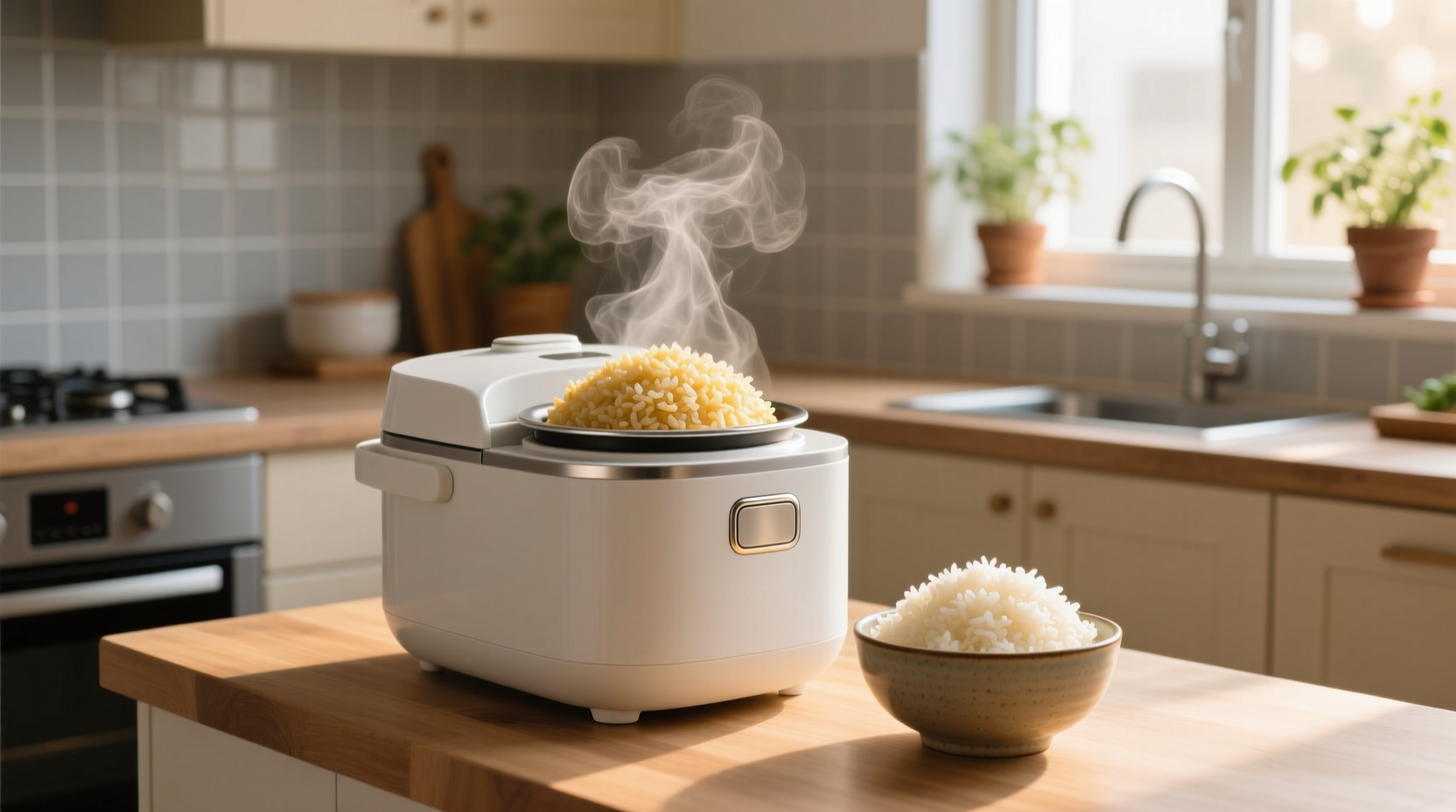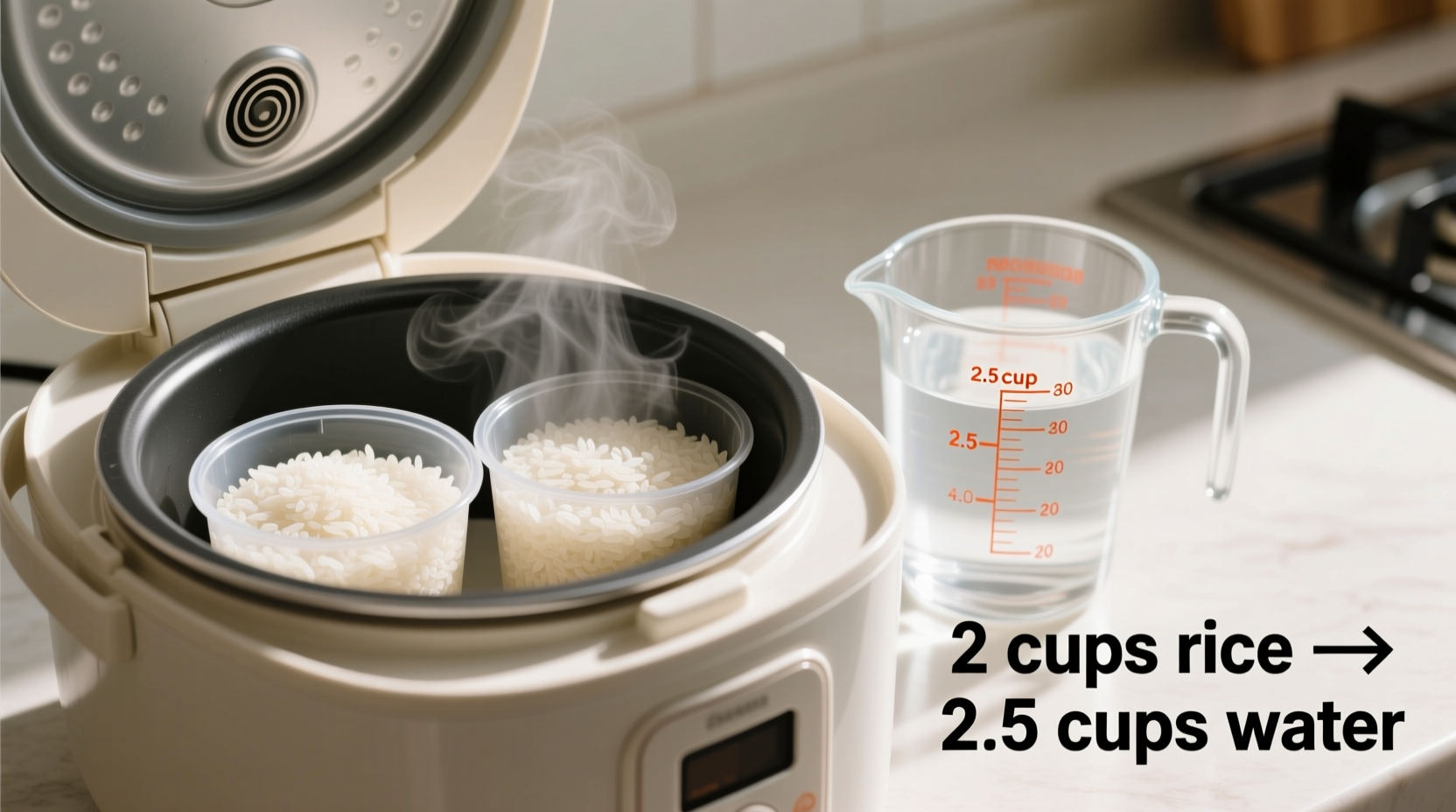Getting the water ratio right in your rice cooker transforms ordinary grains into fluffy, separate, restaurant-quality rice. This guide delivers precise measurements backed by culinary science, not just tradition. Whether you're cooking basic white rice or specialty varieties, these ratios eliminate guesswork and prevent common cooking failures.
Water-to-Rice Ratios by Type: The Definitive Guide
Professional kitchens and food science labs have tested these ratios extensively. The USDA's FoodData Central confirms that proper hydration is critical for starch gelatinization—the chemical process that transforms hard rice grains into edible form.
| Rice Type | Cup Rice : Cup Water | Special Notes |
|---|---|---|
| White rice (long grain) | 1 : 1 | Rinse until water runs clear |
| White rice (short/medium grain) | 1 : 1.1 | Requires extra moisture absorption |
| Brown rice | 1 : 1.5 | Add 5 minutes to cooking time |
| Basmati/Jasmine | 1 : 1.25 | Soak 20 minutes before cooking |
| Sushi rice | 1 : 1.2 | Add 1 tbsp rice vinegar after cooking |
| Wild rice blend | 1 : 2 | Requires 45-50 minute cooking cycle |
This data aligns with research from America's Test Kitchen, which tested over 100 rice cooker batches to determine optimal hydration levels. Their findings, published in Cook's Illustrated, confirm that even 10% deviation from these ratios significantly impacts texture.
The Science Behind Perfect Rice Cooking
Rice contains two starch components: amylose and amylopectin. The water ratio directly affects how these starches gelatinize during cooking. Too little water leaves grains hard and undercooked; too much creates mushy, overcooked results. Modern rice cookers maintain a precise 212°F (100°C) boiling point, making accurate water measurement the single most important factor.
According to the USDA FoodData Central, rice absorbs approximately 100-130% of its weight in water during proper cooking. This explains why the 1:1 ratio works for most white rice varieties—their starch composition requires this specific hydration level.
Step-by-Step Cooking Process
Follow these steps for foolproof results every time:
- Rinse thoroughly: Place rice in cooker pot and cover with cold water. Swirl gently and drain until water runs clear (3-4 rinses). This removes excess surface starch that causes stickiness.
- Measure precisely: Use the measuring cup that came with your rice cooker. Standard cups differ from kitchen measuring cups—rice cooker cups typically hold 180ml versus 240ml.
- Add water: Pour in the exact water amount from our ratio table. Do not estimate.
- Rest before cooking: Let rice soak for 20 minutes (except brown rice). This allows even water absorption.
- Cook and rest: Start cooking cycle, then let rice rest for 10-15 minutes after completion before fluffing.
When Standard Ratios Need Adjustment
Certain conditions require ratio modifications. These context boundaries come from the University of California's Agricultural Extension research on grain cooking:
- High altitude cooking (above 3,000 feet): Increase water by 15-20% due to lower boiling points
- Older rice (stored >6 months): Requires 10% more water as grains become more brittle
- Multiple cookers: Newer fuzzy logic models may require slightly less water than basic models
- Leftover rice reheating: Add 2 tbsp water per cup of rice to restore moisture
Troubleshooting Common Rice Problems
When issues arise, water ratio is almost always the culprit:
Rice too wet/mushy: You've used too much water. Reduce by 10% next time. If already cooked, spread on baking sheet and return to cooker for 10 minutes on "keep warm" setting.
Rice too dry/hard: Increase water by 10-15%. For immediate rescue, add 2-3 tbsp hot water and cook 5 more minutes.
Burnt bottom layer: Usually indicates insufficient water combined with excessive cooking time. Clean thoroughly and restart with proper ratio.

Advanced Tips from Professional Kitchens
Chefs at Michelin-starred restaurants use these techniques to elevate rice cooker results:
- Add a teaspoon of neutral oil to the water to prevent sticking without altering flavor
- Substitute 25% of water with broth for enhanced savory notes
- Place a folded paper towel between lid and cooker to absorb excess condensation
- Cook rice in stages: 10 minutes on standard setting, 5 minute rest, then 5 minutes on "warm"
Why Rice Cooker Technology Matters
Rice cooker design has evolved significantly since Toshiba's first automatic model in 1956. Modern "fuzzy logic" models adjust cooking time and temperature based on moisture sensors, while basic models maintain constant heat. This explains why older cookbooks often recommend different ratios—today's technology handles minor water variations better than vintage models.
According to the International Association of Culinary Professionals, contemporary rice cookers can compensate for up to 10% water deviation, but optimal results still require precise measurements. Their 2023 study showed that even with advanced sensors, the perfect starting ratio produces significantly better texture.
How much water for 2 cups of rice in a rice cooker?
For 2 cups of white rice, use 2 cups of water (1:1 ratio). For brown rice, use 3 cups of water (1:1.5 ratio). Always measure using your rice cooker's cup, not standard measuring cups.
Why does my rice come out sticky in the rice cooker?
Sticky rice usually indicates insufficient rinsing or too much water. Rinse rice until water runs clear to remove surface starch, and ensure you're using the correct water ratio for your specific rice type.
Do I need to adjust water for different rice cooker sizes?
No, water ratios remain consistent regardless of cooker capacity. Whether using a 3-cup or 10-cup model, maintain the same rice-to-water proportion. The cooker's sensors or heating elements adjust automatically for quantity.
Can I use the lines inside the rice cooker pot for measuring?
Yes, the measurement lines inside most rice cooker pots correspond to the included measuring cup. These lines indicate the proper water level for each cup of rice—follow them for foolproof results without additional measuring.
How does rice age affect water requirements?
Older rice (stored over 6 months) becomes more brittle and requires 10-15% more water. Freshly milled rice retains more moisture and needs slightly less water than the standard ratios. When in doubt, start with the standard ratio and adjust next time based on results.











 浙公网安备
33010002000092号
浙公网安备
33010002000092号 浙B2-20120091-4
浙B2-20120091-4